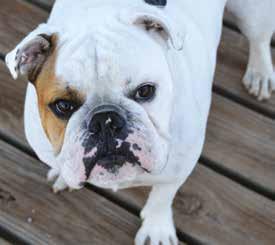
2 minute read
What do our national animals say about us?
from Hitchin July 2020
by Villager Mag
Quirky Britain
What do our national animals say about us? By Kate McLelland
Advertisement
Australia has the barn swallow, Belarus has the European bison, Canada has the beaver and, famously, China has the giant panda. Almost every country in the world has its national bird or beast, and some have more than one. In most cases, countries select their national animal or bird based on the creature’s characteristics. In order to qualify for ‘national’ status, the animal – whether a living thing or an imaginary beast – must share the same qualities, values and spirit as its home nation.
England: the lion
The lion symbolises courage, nobility, royalty, strength, stateliness and valour. Lions were first used as royal emblems by Danish Vikings and later by Saxon leaders. In the late twelfth century Plantagenet kings decided to use three lions on their heraldic shields and the symbol endures to this day, on coins, and, of course, on those iconic English football shirts.
Scotland: the unicorn
In Celtic mythology this fabled beast represents innocence and purity. It is also believed to be a symbol of masculinity and power, which is perhaps why it was favoured by Scottish kings. The unicorn first appeared on a Scottish royal coat of arms in the twelfth century reign of King William I, and when King James VI took over the English throne in 1603, he combined the unicorn with the English lion in a royal crest that is still used today.
Wales: the dragon
More of a heraldic beast than a living creature, Wales’ national animal is the ‘Red Dragon of Cadwaladr’. Legend has it that the magician Myrddin (or Merlin) prophesied an epic fight between the red dragon (representing the Welsh people) and a white dragon

(representing the English).
Northern Ireland: centaur or elk?
Wikipedia lists Northern Ireland’s national animal as a centaur, although there’s no explanation as to why this mythical half-man, half-horse was chosen to represent the six counties of Northern Ireland. A 1924 coat of arms showed a red lion (for the Ulster Scots) standing opposite an Irish elk (representing what officials of the time jarringly referred to as ‘the native element’). Unsurprisingly, this highly controversial badge is no longer used.
Spirited symbol: the bulldog
While the bulldog doesn’t carry the same official weight as the lion, unicorn or dragon, it would probably win any poll in which voters were asked which creature best represented the nation’s character. Despite being famously used in WW2 propaganda, the well-known expression ‘British Bulldog Spirit’ actually dates from the eighteenth century, when bulldogs developed a fearsome reputation as fighting dogs in the popular sport of bull-baiting. The British may be great animal lovers but it’s clear that we don’t let our hearts rule our heads when picking creatures to represent our nation. Those animals are not chosen for their fluffy, endearing qualities but for their strength, endurance and power. They have stood us in good stead for many hundreds of years and will doubtless continue to represent our nation well into the future.










